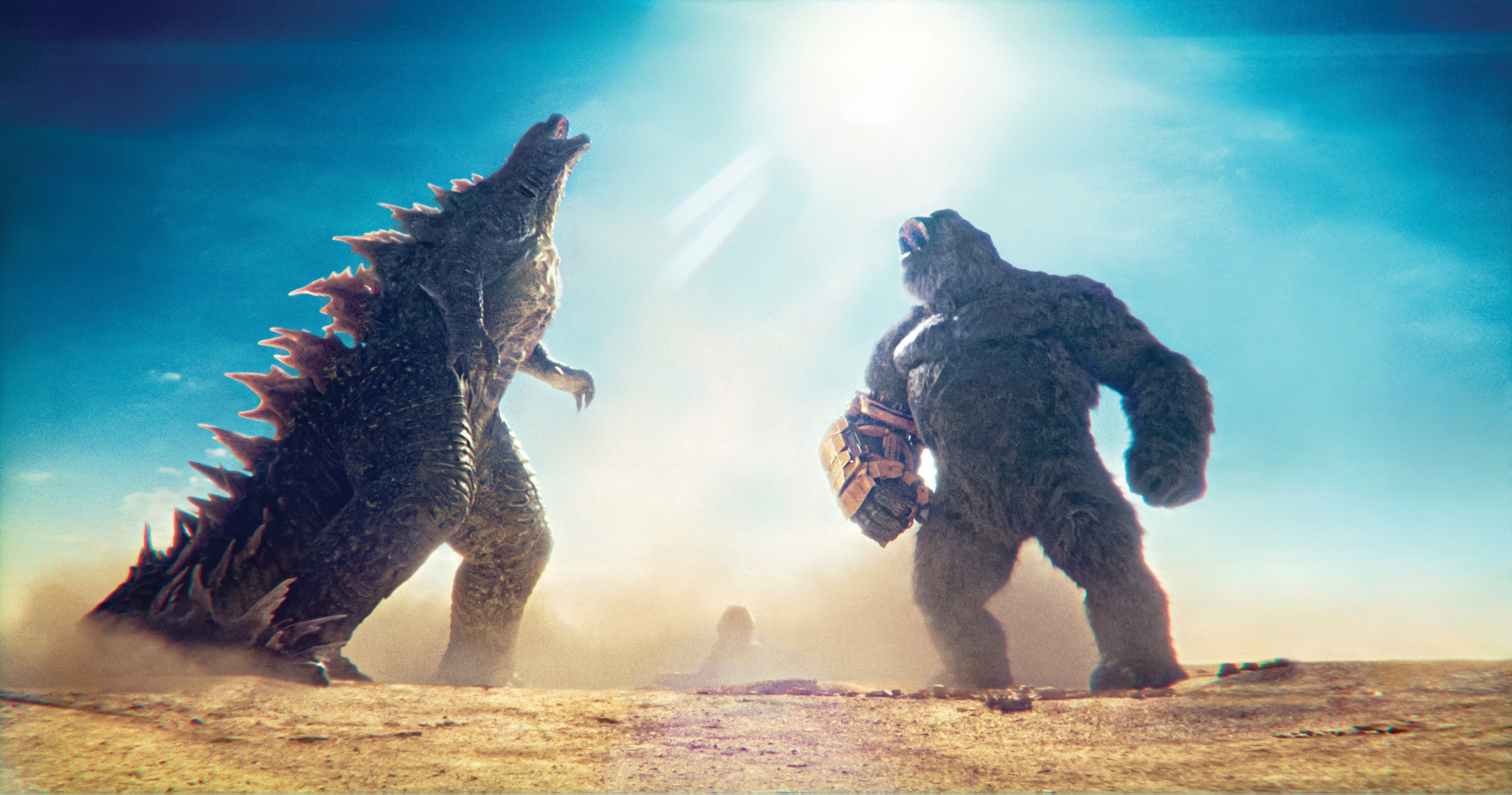
Earth-Shattering Optics for Godzilla x Kong: The New Empire
Ben Seresin, ASC, BSC employs an array of custom lenses and advanced optics to immerse viewers in a clash of classic titans.
Unit stills by Daniel McFadden. All images courtesy of Warner Bros. Pictures.
When cinematographer Ben Seresin, ASC, BSC reunited with director Adam Wingard for the sequel to their 2021 monster movie, Godzilla vs. Kong, the filmmakers sought to create a visceral experience that would avoid the clinical feel of many CGI-laden productions. “We wanted the audience to be drawn into the film visually without any technological barriers,” Seresin says of the follow-up feature, Godzilla x Kong: The New Empire — in which the top-billed titans team up to take down an even-bigger existential threat dwelling beneath the Earth’s crust. “The goal was to make it feel real, like someone was there with a camera capturing everything as it happened. Our solution was a common visual language that could be applied both in live-action and computer-generated scenes.”
“It’s rewarding when experimentation is embraced, because this kind of exploratory approach is crucial to innovation.”
— Ben Seresin, ASC, BSC
Drawing the Audience In
Key to the filmmakers’ strategy was a combination of anamorphic and larger-format photography, which Seresin accomplished by shooting with 1.65:1-squeeze lenses on the Arri Alexa Mini LF and Red Komodo, and the Alexa LF for high-speed work. The cinematographer initially had reservations about this setup, preferring the distinct purpose served by 2x anamorphic lenses. “However, after testing Panavision’s Ultra Vista lenses, we found they had a unique characteristic that aligned with our vision, and [ASC associate and Panavision senior vice-president of optical engineering and lens strategy] Dan Sasaki’s expertise allowed us to fine-tune them for our shooting needs,” he says.
Seresin relied primarily on Ultra Vista 1.65x primes in the 40mm180mm range, as well as a custom-built Ultra Vista 35mm and a set of custom-made Petzval anamorphics. His zoom lenses included Panavision’s anamorphic ALZ3 270-840mm and ALZ11 48-550mm and spherical VA 15-30mm and 28-80mm. Spherical Tribe7 Blackwing7, Helios 44-2, Arri Signature and Canon EF 24mm f/1.4 L II USM primes were used for 2nd-unit and plate photography, which was shot by 2nd-unit director/cinematographer Alessandro Ongaro in Iceland and Qatar, with an assist from cinematographers Darin Moran (in Hawaii) and John Marzano (Rome and Rio de Janeiro, as well as aerial work). Ongaro notes that the Canon EFs were paired with a six-camera Red Helium array rig, which was used for plate photography in Iceland.
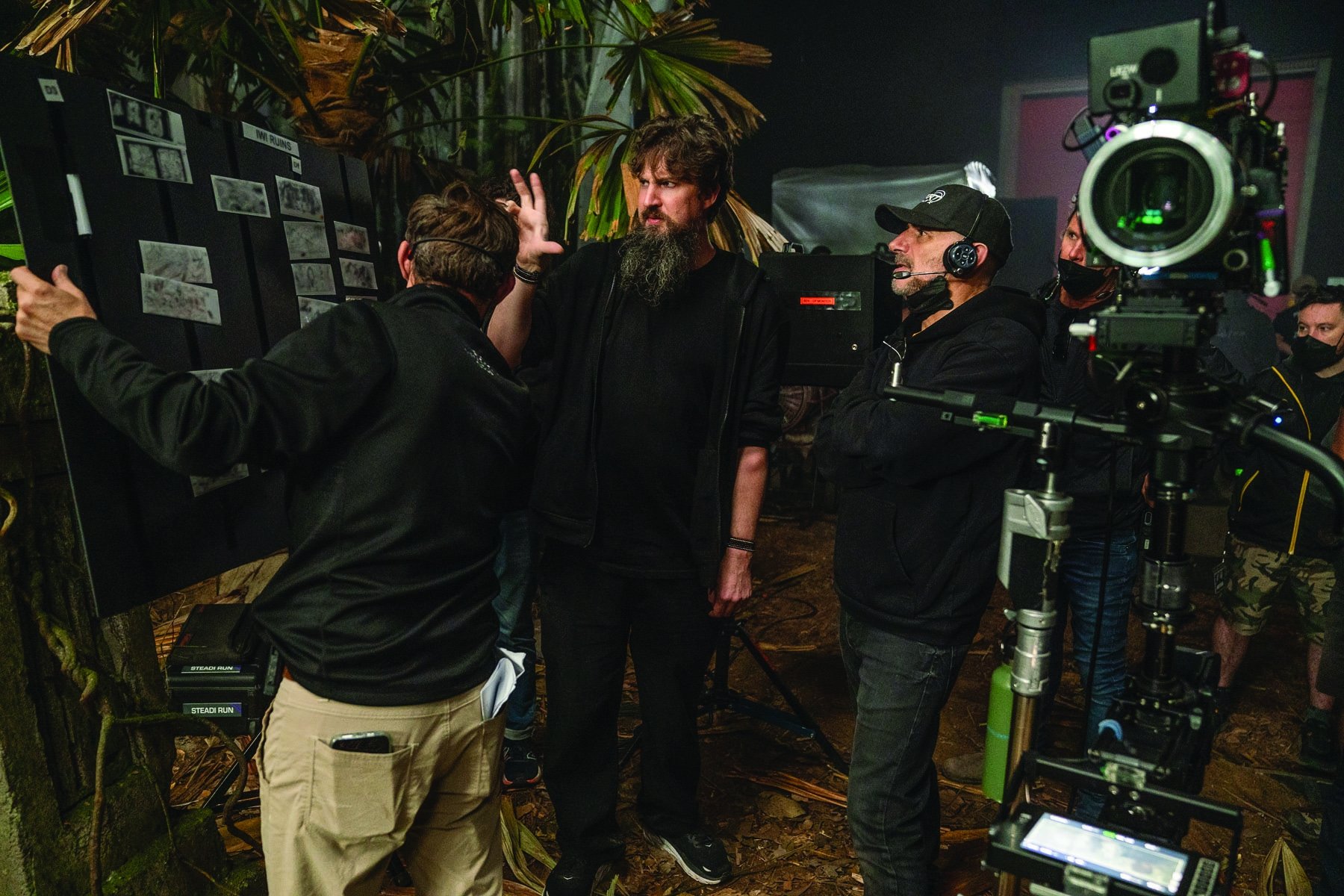
“That Nice Swirly Feel”
Seresin had used spherical Petzval-style portrait lenses designed by Sasaki on the 2023 action thriller The Mother, and he asked the engineer to take things a step further by creating 1.65x Petzval anamorphic lenses that blended the feel of a familiar environment with an unbalanced element, particularly for Godzilla x Kong’s “Hollow Earth” scenes (in which the main characters launch their plan to take on another set of monsters).
“The motion-picture community has embraced Petzval lenses for their nice swirly feel, [which is] often achieved through astigmatism,” says Sasaki, referring to the optical aberration wherein two light rays that propagate on perpendicular planes resolve on different image planes.
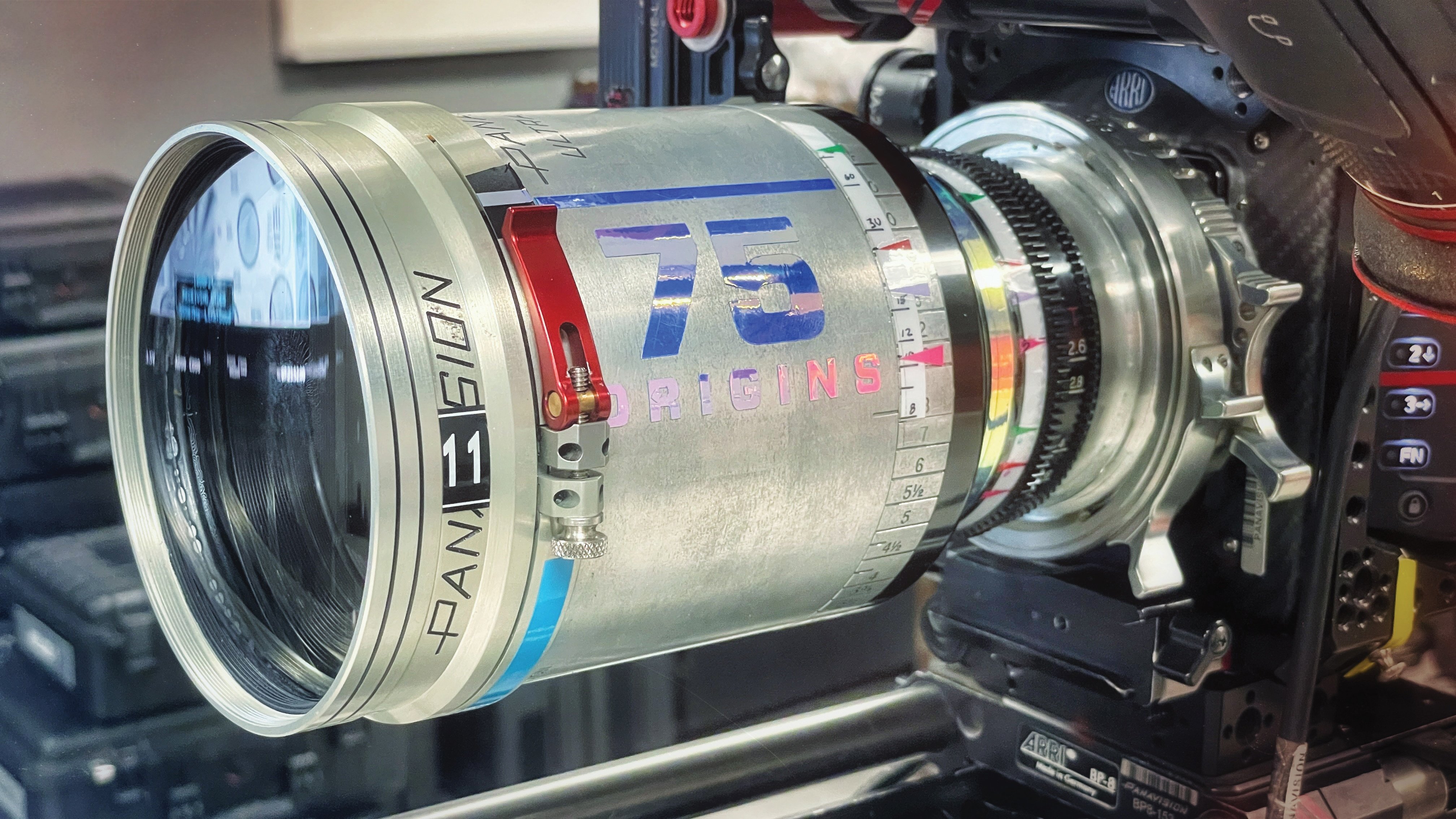
Sasaki’s goal was to create a unique look without making the images appear overly out of focus or blurry. He produced 37mm, 59mm and 90mm anamorphic primes based on the Petzval concept. “Using additional elements, I can start altering my field curvature,” Sasaki says.
Throughout production and postproduction, Seresin adjusted lens effects such as chromatic aberrations and fringing to complement the drama at hand. He recalls, “It became an intuitive process of finding the right balance to ensure that the visuals enhanced the storytelling without creating sharp contrasts that detracted from the narrative flow. For example, when the crew [of heroes] land to investigate the mysterious destruction of the Monarch base in Hollow Earth, they become increasingly concerned with the newly discovered Titan threat. We introduced that sense of unease through the progressive adjustment of the lenses.
Bespoke Collaboration
In addition to custom lenses, Seresin’s camera crew carried 13 clamp-on optical attachments. They could be quickly applied and removed to create looks ranging from “lite” to “heavy,” depending on the scene’s requirements.
Developing the attachments and ensuring their compatibility across different lens sets and focal lengths was a collaboration among Seresin, Sasaki and A-camera 1st AC Simon England. Seresin optimized his workflow by having the main-unit lens mounts converted to PV 65 and standardized housings to 113mm diameter.
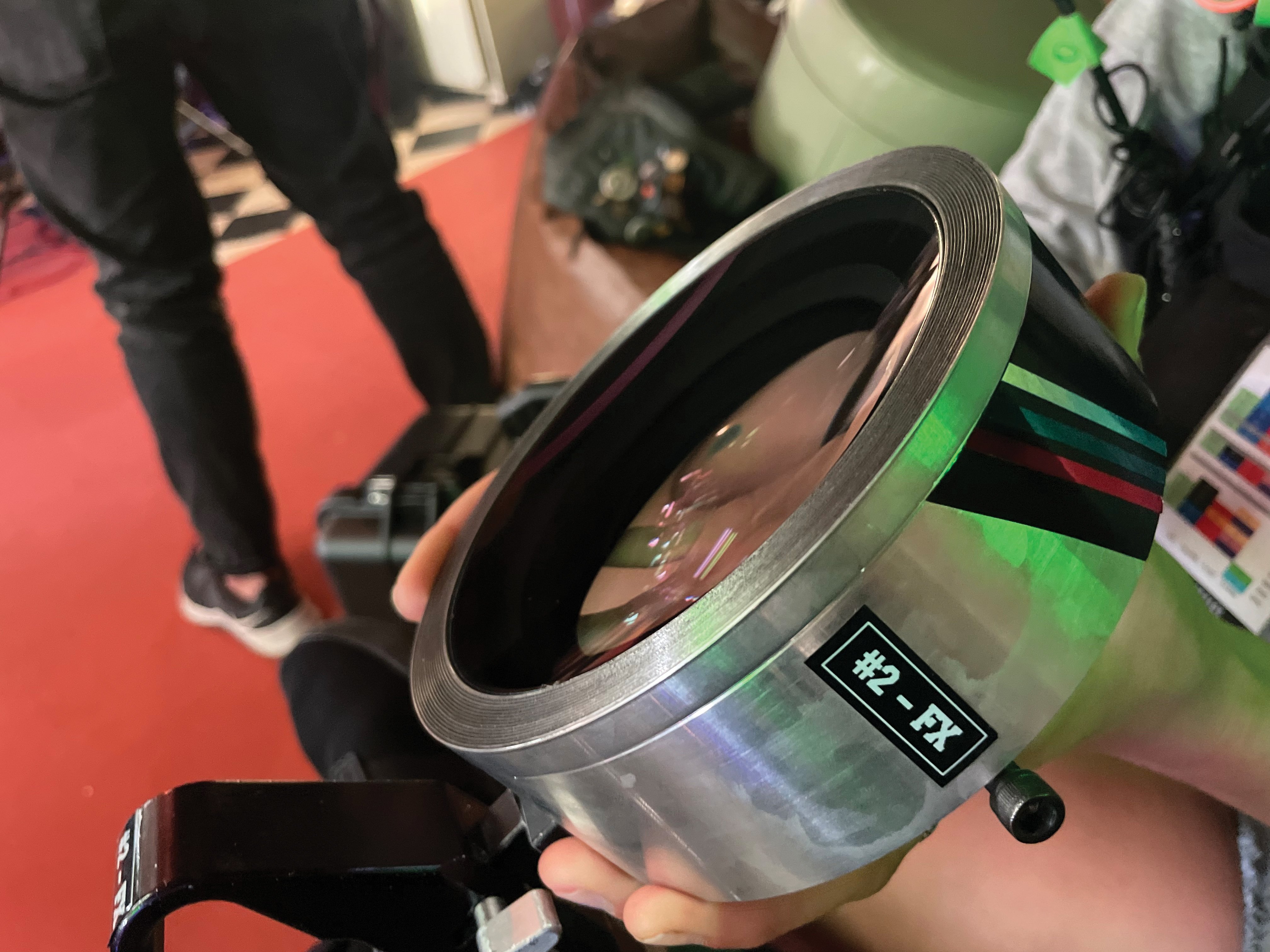
“We experimented with coatings, element designs and lens configurations to achieve the desired effect, such as creating a Petzval-like quality for the Ultra Vistas,” England recalls. One attachment was used to enhance a lens’ natural flare, and another induced dramatic color fringing. Seresin adds that there were numerous benefits offered by these attachments, including “attempting to eliminate any ‘sterile’ lens characteristics, or enhancing fire and flame effects through unpredictable flaring.”
Each lens needed specifically calibrated attachments or combinations thereof to address resolution, flares and other characteristics unique to its focal length and design. Aligning the attachments correctly was essential to maintain sharpness and focus consistency across the frame, and understanding each attachment’s impact was crucial for England’s focus pulling, as the field curvature was designed to affect specific parts of the frame. The most challenging aspect, he says, “was managing focus due to the multiple focus scales introduced by different [attachments].”
Real-world testing was conducted in environments similar to the story’s settings, including the Huntington Botanical Gardens in Pasadena, Calif. In production, Seresin relied on intuition: “We adapted our lens choices to match the evolving environment and narrative. We sometimes found that certain combinations didn’t produce the desired effect until we pushed them to the most extreme settings, and then we backed off.
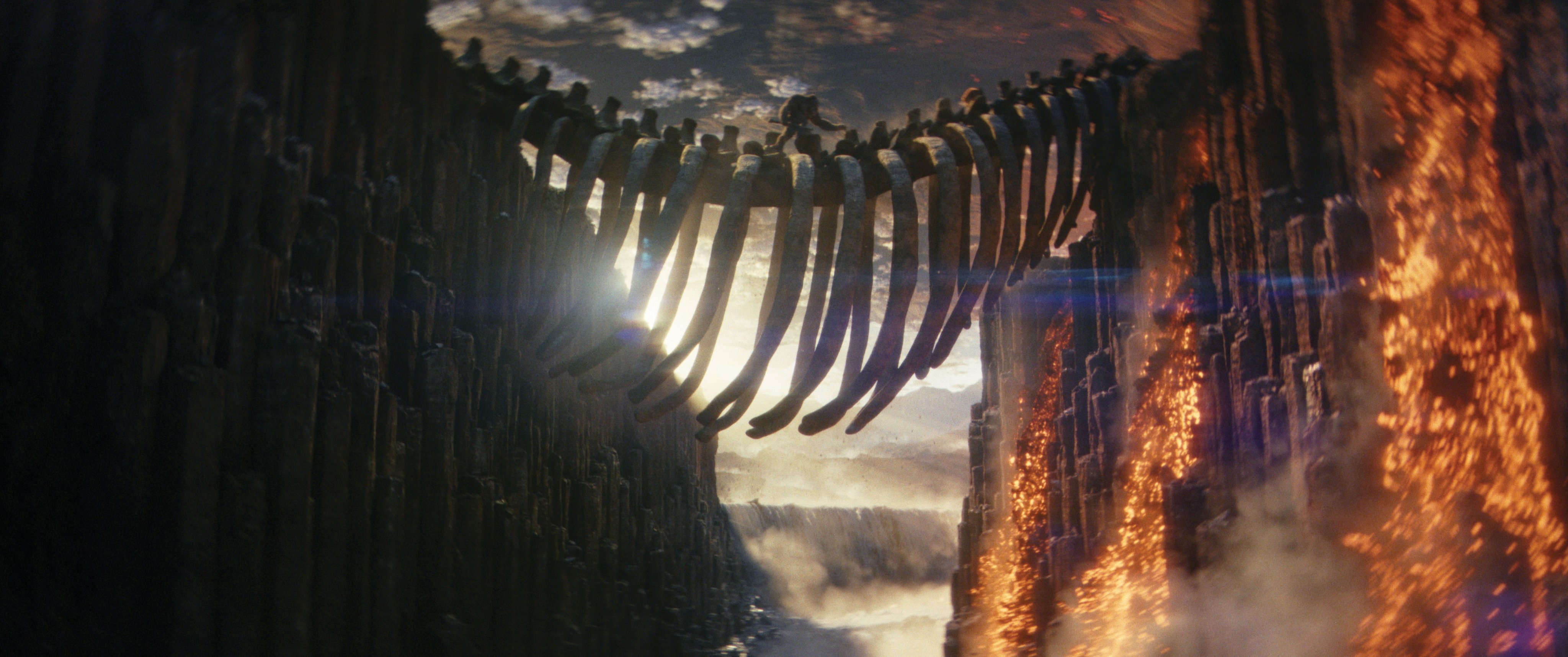
Another important consideration was the cinematography’s impact on Tom Hammock’s production design. “[Tom’s] inclusive approach aligned well with our vision,” says Seresin. “We collaborated extensively on lighting, textures and set design to complement the lenses’ visual impact, and we used smoke and [other] atmospheric effects to further enhance the lens characteristics.”
During the testing phase — conducted primarily in Panavision’s theater via projection — Seresin experimented with the lenses’ resolution and resolving power to try to anticipate how more extreme looks and attachment variations would translate to the big screen. Theatrical deliverables included 2D/3D 4K, Imax Digital and Dolby Cinema masters.
A Unique Post Workflow
For the 2D deliverable, Seresin incorporated a scan-back-to-film step and special photochemical processing at FotoKem “to introduce a filmic quality with grain and texture, which is especially important given the heavy use of CGI,” he says. A 35mm internegative was filmed out at 4K to Kodak Vision3 Color Digital Intermediate Film 2254, which was then processed with a bleach bypass before being re-digitized at 4K.
Supervising colorist Dave Cole calls FotoKem’s method “a truly analog intermediate process. Instead of creating a printable neg, we’re using the negative as a data-storage device with its own characteristics. When we bring it back in, we match it back to the show LUT before doing final creative touches.”
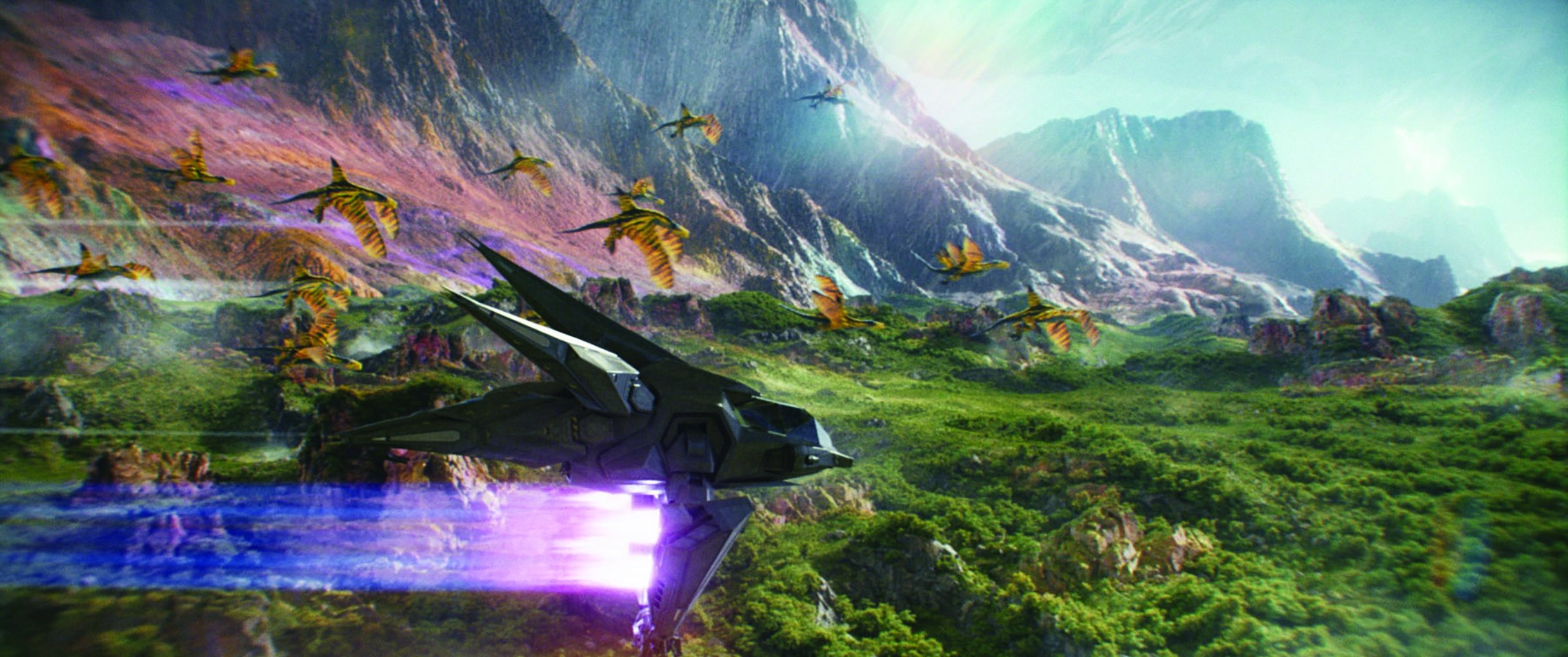
The VFX Approach
Nearly an hour’s worth of Godzilla x Kong is completely computer-generated. Shot designs were initially planned by Ongaro — who also served as the show’s visual-effects supervisor — and the previs company The Third Floor.
“I would substantially develop the scenes before presenting them for review with Adam Wingard, and he’d suggest changes in shot composition or camera angles,” Ongaro says. “The cinematography approach for the full-CG world closely followed that of the main unit; this included limiting extravagant camera moves and embracing a more restrained approach, except for specific scenes where a dynamic camera was warranted.”
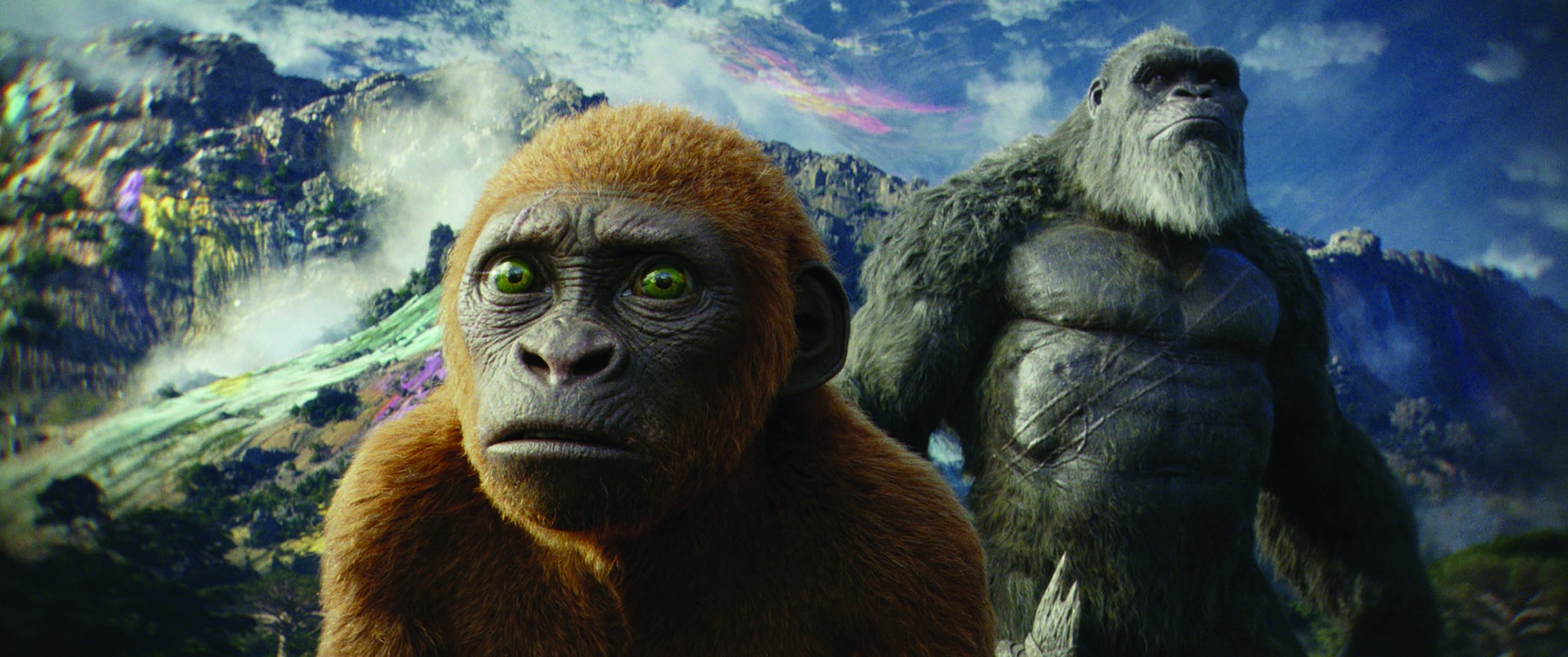
Wētā FX and Scanline VFX did most of the fully CGI work, with contributions from Dneg, Luma Pictures and others. Previs was done in Maya, enabling the VFX vendors to quickly transition into production without starting from scratch.
The virtual camera used on the production was modeled after the Alexa LF, matching its 36.70mm x 25.54mm sensor size for optical consistency. Early in previs, Ongaro used a 2.39:1 aspect ratio, which was later altered to 1.89:1 to accommodate Imax projection. “This new choice necessitated using spherical lenses instead of anamorphic ones,” he says.
The filmmakers did a 2.39 extraction for standard screenings, leading to considerations about cropping and masking for different formats. “If you favor the 2.39 treatment, then it wouldn’t work for a 1.89 frame because then you have an extreme look at the top and bottom, but if we were doing that treatment only in 1.89, when you crop the 2.39, you only get the look east and west,” Ongaro says.
“In the DI, we hard-matted the 1.89 aspect ratio to 2.39 for standard screenings,” he continues. “In Imax screenings, the aspect ratio shifts from 2.39 for the non-CG shots to 1.89, creating a visible change in crop and framing.”
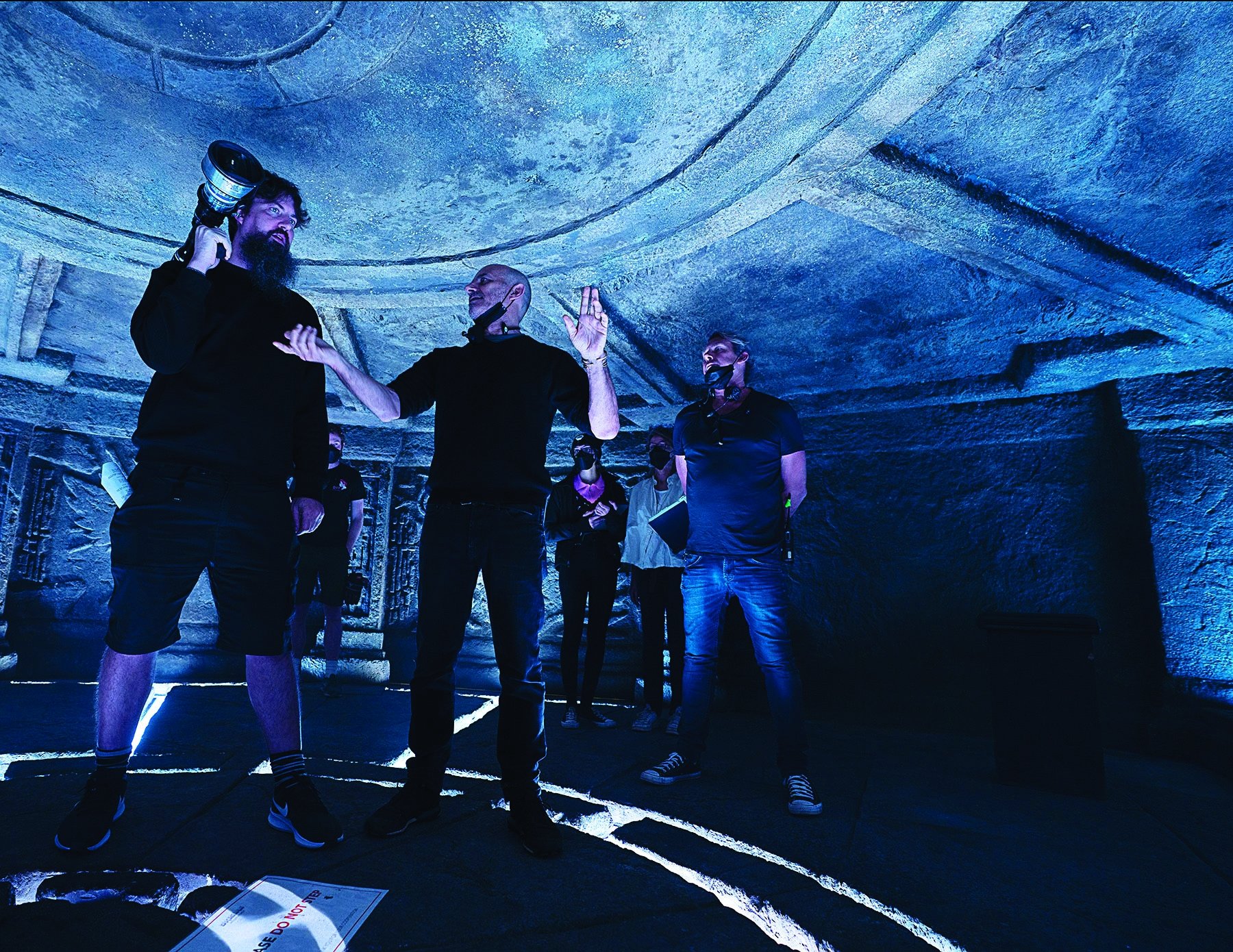
Though not based on a particular lens design, Ongaro’s virtual spherical primes closely mirrored the focal lengths used by the main unit, including a 65mm, 75mm, 80mm and 100mm. A virtual prescription was developed to mimic the characteristics of Seresin’s stronger character lenses and attachments, and it was applied with varying intensity based on the shot’s context. For intimate or non-action scenes, the treatment was adjusted to resemble live-action lenses more closely.
“The scenes in Hollow Earth and the presence of Titans in full CG demanded a portrayal of depth and scale,” says Ongaro. He chose wider lenses and reduced the lens treatment for shots emphasizing the size of the monsters as seen from the humans’ POV.
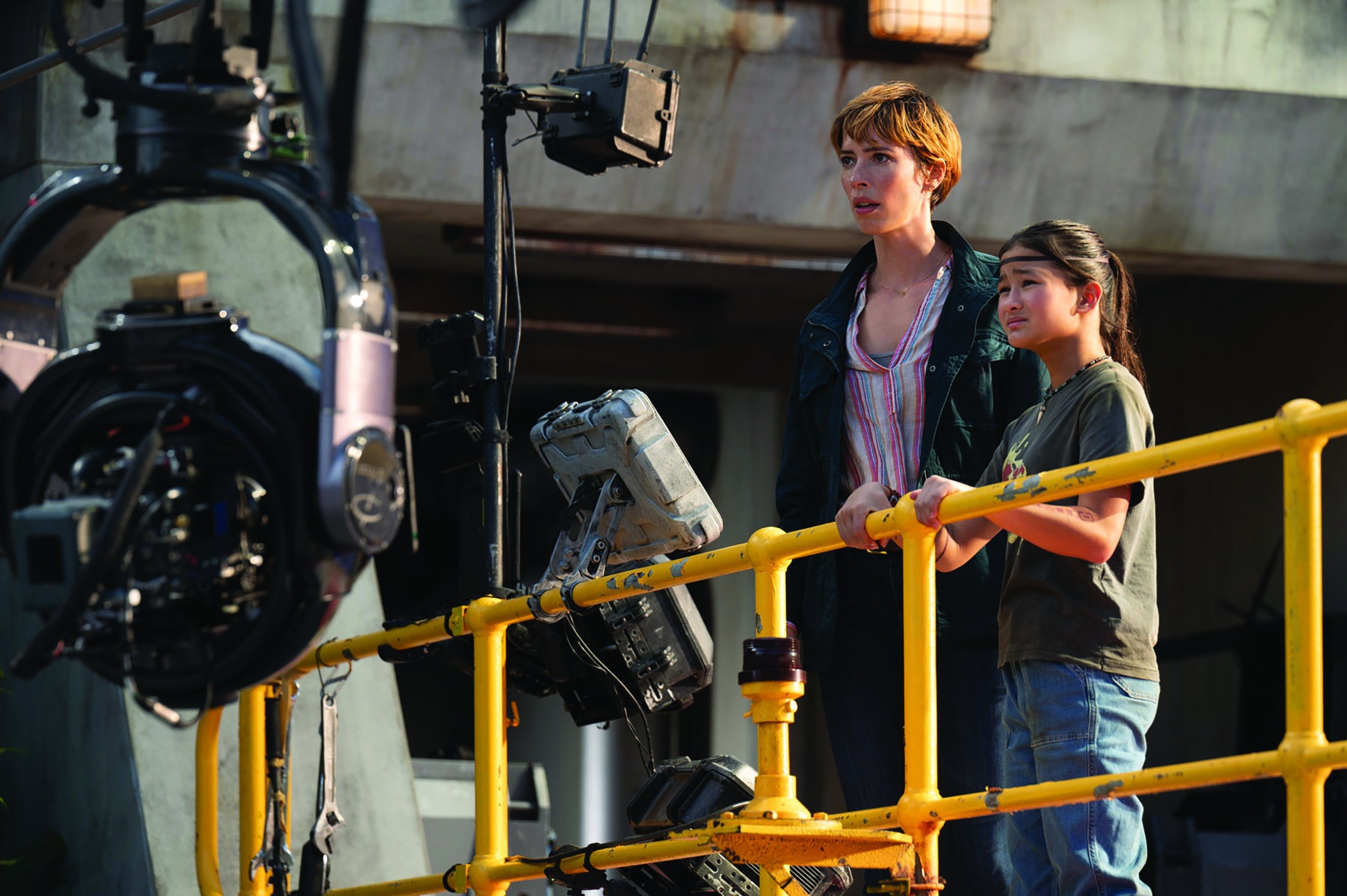

A Blended World
Achieving a consistent look between live-action and CG shots meant that every lens used on set had to be mapped. Ongaro shot grid patterns on set as a reference for lens distortion and other optical aberrations, as well as Christmas lights for bokeh and torchlight for lens flares. The grids were provided to vendors to replicate the lens effect in post.
One of Seresin’s concerns was how the VFX teams would handle the lenses’ more extreme characteristics, particularly when integrating live-action performers with digitally rendered elements.
Ongaro explains the process: “Visual-effects artists used automated and semi-automated tools to generate a distortion map which, when reversed and applied to the footage, re-aligned the RGB channels to remove or minimize the chromatic aberration. The map also explained how the image softened toward the edge of the frame, which helped with camera tracking, roto and compositing. At the end of the workflow, the lens treatment was reapplied so that the final result with the added CGI matched the original image.”

Complicating matters was the fact that each vendor had its own approach to interpreting the mapping data. Sasaki’s solution was to simplify the data. “One significant lesson we learned on this project was the importance of controlling aberrations to maintain their predictability,” he says.
This process involved using computer models to analyze how different elements in the attachments affected lens behavior. “By keeping aberrations relatively monotonic — meaning that a lightwave holds its shape from barrel to pincushion — we ensured that the CG artists could achieve the desired lens effect without excessive difficulty,” says Sasaki.
In the grade, Cole, senior colorist Mark Griffith, 3D colorist Philip Beckner and assistant colorist Claire Iannelli enhanced the filmmakers’ work to blur the line between live action and CGI by shifting focus to guide the audience’s eye and adding lens aberrations for consistency between shots. Simple defocus effects could be handled by a single plugin, but lens aberrations were achieved through a combination of nodes in DaVinci Resolve, allowing Cole to define their contour and where they occurred in the frame. For chromatic distortions, he offset the frame sizes of the red, green and blue channels. Cole adds that this finishing work was completed “more so on the photographed footage,” and that “most of the heavy lifting of lens matching in the VFX shots was handled in VFX.”
Says Seresin, “In an industry where there can be hesitancy to push visual and conceptual boundaries, the support from Adam, the studio and the entire team was encouraging. It’s rewarding when experimentation is embraced, because this kind of exploratory approach is crucial to innovation.”
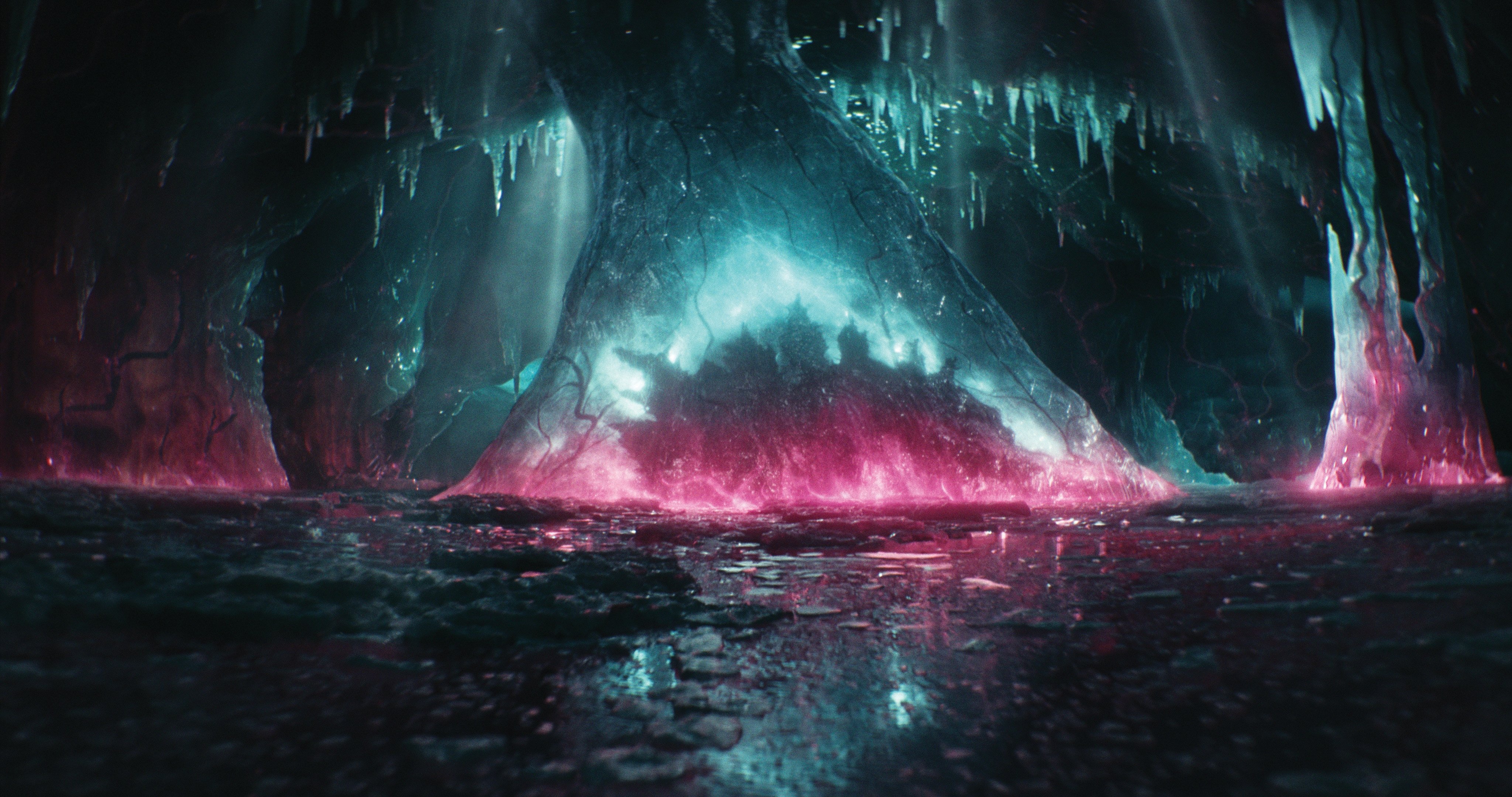
Tech Specs
2.39:1, 1.89:1
Cameras | Arri Alexa LF, Mini LF; Red Komodo, Helium
Lenses | Panavision Ultra Vista, Petzval anamorphic prime, ALZ zoom, VA zoom; Tribe7 Blackwing7; Helios; Mir; Jupiter; Tair; Canon EF






